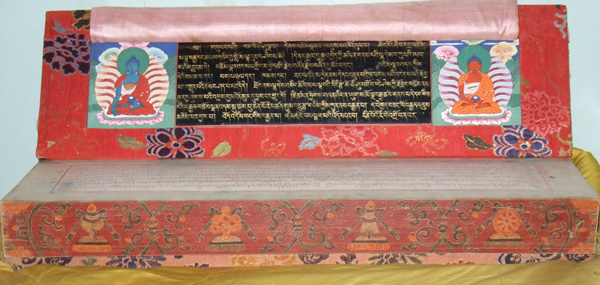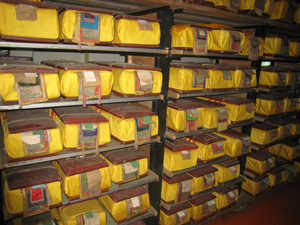The Kangyur
22 Mar
A friend recently asked me what a Kangyur is and I gave her a brief explanation. So, to expand on that explanation, I did some research and here it is:-
During the Buddha’s time, many of his disciples became arhats or great disciples that had achieved cessation of suffering through listening to the Buddha’s teachings. Part and parcel of this spiritual attainment is the ability to memorize everything that the Buddha had ever spoken and was able to recite it verbatim.
After the Buddha passed away, the original congregation of Arhats lessened. The Buddha’s teachings continued to be transmitted down to newer disciples. However, the newer generations of disciples found it difficult to retain the vast body of the Buddha’s teachings. Thus, the congregation of the Sangha gathered in great Buddhist Councils to record down the spoken words of the Buddha that are part of the scriptures that we know today.
Buddhism thrived in India and was transmitted to Tibet from as early as the 6th century onwards. Tibet continued to absorb Buddhism from India and many of the sacred body of scriptures were translated into Tibetan. As Tibetan scholars and translators began to categorize the dizzying amount scriptures, one great 14th Century Tibetan translator, Buton Rinchen Drub underwent a mammoth project to edit and compile the entire body of existing scriptures into the Kangyur and Tengyur collection. The Kangyur and Tengyur correspond to the collection of the spoken words of the Buddha and the collection of translated treatises or commentaries by various Indian and Tibetan masters.
The Kangyur is traditionally a collection of 108 volumes of scriptures that were attributed to be the spoken words of the historical Buddha. All of these texts were originally in Sanskrit and were translated into Tibetan with some the texts translated from Chinese and other Central Asian translations. The collection is divided into texts on Sutra, Tantra, Vinaya, Prajnaparamita, Buddhavatamsaka and Ratnakuta. There are many extant versions of the Kangyur and they are the Derge, Lhasa, Narthang, Cone, Peking, Urga and Stog Palace editions. However, all seems to have stem from the original Kangyur of Narthang Monastery.
Buddhists traditionally consider the scriptures to be holier than a Buddha statue. This is because the scriptures contain the teachings of the Buddha that can lead one directly towards enlightenment if one puts it into practice. Therefore, all Buddhist temples and institutions would have the Kangyur collection, which is usually placed in huge shelves by the altar for veneration. The scriptures thus become symbolized as the speech aspect of the Buddha.
Source:-
http://en.wikipedia.org/wiki/Kangyur
http://www.rigpawiki.org/index.php?title=Kangyur







Hi David, thk for your sharing. Nice